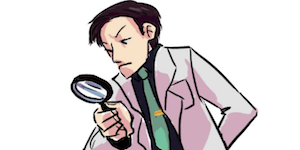Publication
Article
Pharmacy Times
Chronic Insomnia May Require Intervention
Author(s):
While considering different factors, pharmacists can offer guidance on then best treatments.
About 30% to 50% of adults are estimated to experience insomnia at some point in their lifetime, and 20% are known to experience persistent insomnia. Pharmacists can offer medication therapy management (MTM) for the various treatments.1
Insomnia is a condition that can cause a number of problems, such as absenteeism.2 Individuals experiencing insomnia are about 2 times more likely to be absent from their work compared with good sleepers. The disorder can be caused by anxiety, depression, medication adverse effects (AEs), periodic limb movement disorder, and restless leg syndrome, among other factors.3 As clinicians, it is crucial to identify the underlying causes of insomnia to eliminate or minimize such factors.
Insomnia can be classified into 3 categories based on its duration: chronic insomnia (> 3 weeks), shortterm insomnia (1-3 weeks), and transient insomnia (< 1 week). Let’s look at how clinicians can optimize MTM to treat chronic insomnia.
The primary treatment goals are to improve sleep quality and quantity and insomnia-related daytime impairments regardless of therapy type, according to the American Academy of Sleep Medicine (AASM) clinical practice guideline.4 OTC antihistamine and herbal products are not recommended due to a lack of data.
Individuals with primary chronic insomnia may use short- to intermediate-acting benzodiazepine receptor agonists (BzRAs), such as eszopiclone, temazepam, triazolam, zaleplon, or zolpidem. When patients do not respond well to an initial BzRA, the clinician may choose an alternative BzRA or ramelteon. The AASM does not have a preference for one BzRA over another. Ramelteon and zaleplon have very short half-lives but exhibit a minimal impact on waking after sleep onset; ramelteon is also known for its effectiveness in sleep initiation. When prescribing triazolam, extra caution is needed because of the risk of rebound anxiety.
In case of treatment failure with BzRA or ramelteon or if the patient has comorbid depression, the use of sedating low-dose antidepressants such as amitriptyline, doxepin, mirtazapine, trazodone, or trimipramine may be considered. These agents are known to have clinically significant anti-muscarinic AE profiles, except for trazodone. Mirtazapine should be avoided in individuals who are obese, as it is known for causing weight gain. The AASM does not express a preference for certain antidepressants over others.
When clinicians are selecting hypnotic agents, there are many factors to consider, including the AE profile, Drug Enforcement Administration schedule, drug interactions, and half-life (residual sedation). While taking multiple factors into consideration, pharmacists can provide valuable knowledge in making well-informed decisions about a patient’s medication therapy regimen.
David Kim, PharmD, is a pharmacy officer in the US Air Force. He is currently on military leave and is based at the Mayo Clinic in Rochester, Minnesota. He is also a peer reviewer for the Iowa Pharmacy Association.
REFERENCES
- Ohayon MM. Epidemiology of insomnia: what we know and what we still need to learn. Sleep Med Rev. 2002;6(2):97-111. doi:10.1053/smrv.2002.0186
- Lavie P. Sleep habits and sleep disturbances in industrial workers in Israel: main findings and some characteristics of workers complaining of excessive daytime sleepiness. Sleep. 1981;4(2):147-158. doi:10.1093/sleep/4.2.147
- Keenan CR. Insomnia. In: Henderson MC, Tierney LM Jr, Smetana GW, eds. The Patient History: An Evidence-Based Approach to Differential Diagnosis. 2nd ed. The McGraw-Hill Companies; 2012:81-92.
- Sateia MJ, Buysse DJ, Krystal AD, Neubauer DN, Heald JL. Clinical practice guideline for the pharmacologic treatment of chronic insomnia in adults: an American Academy of Sleep Medicine clinical practice guideline. J Clin Sleep Med. 2017;13(2):307-349. doi:10.5664/jcsm.6470






























